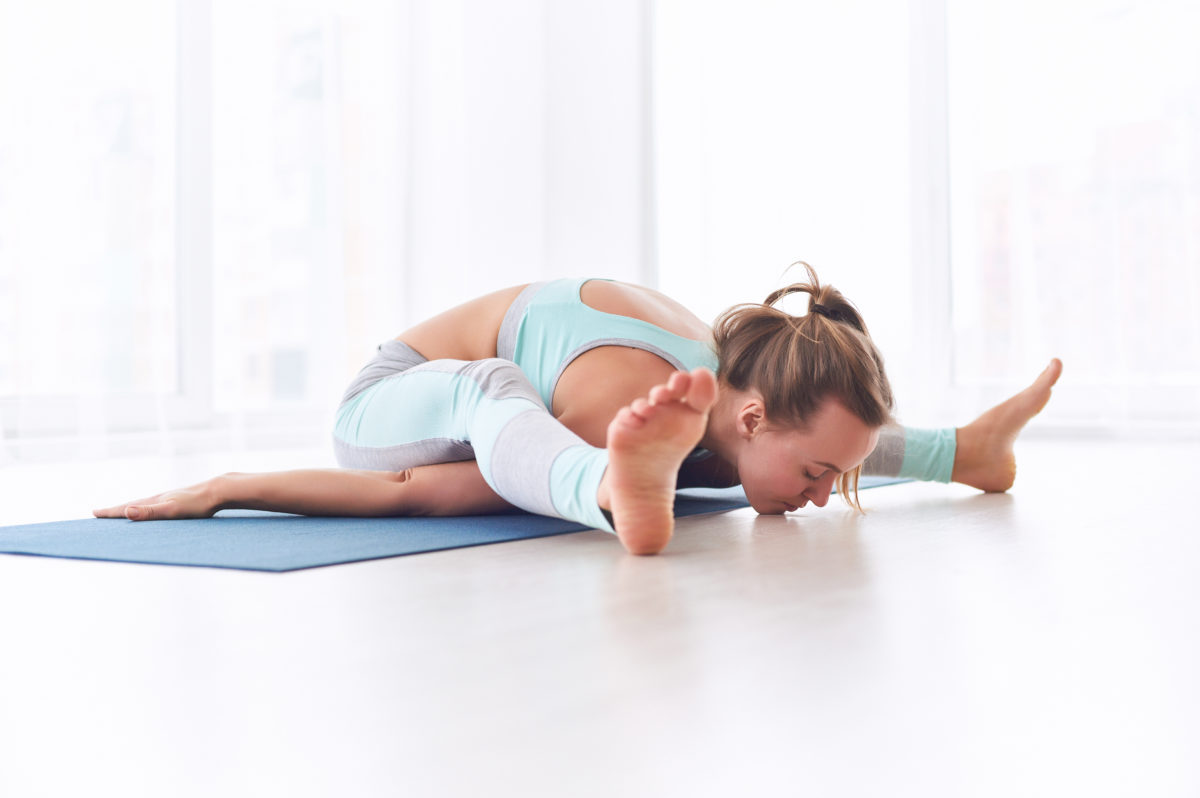The Turtle Pose, or Kurmasana in Sanskrit, is a unique and deeply restorative yoga pose that resembles a turtle withdrawing into its shell. Known for its calming effects, this pose helps stretch the hips, legs, and back, making it an excellent choice for improving flexibility. However, due to its complexity, it’s essential to approach the Turtle Pose with caution to avoid strain or injury. This guide will take you through the steps to practice the Turtle Pose safely, along with tips, benefits, and precautions for beginners.
What Is the Turtle Pose in Yoga?
The Turtle Pose is an advanced seated forward bend in yoga that requires significant flexibility in the hips and hamstrings. In this pose, the body folds forward, arms extend beneath the knees, and the torso lowers close to the ground. Kurmasana can be deeply therapeutic but challenging, especially if you’re new to yoga. Practicing it safely involves proper preparation, warmups, and mindful progression.
Benefits of Turtle Pose
Kurmasana offers numerous physical and mental benefits:
Stretches the Hips and Hamstrings: The pose deeply stretches the hips, thighs, and hamstrings, improving lower body flexibility.
Relieves Stress and Anxiety: Forward bends in yoga have a calming effect, helping to reduce stress and promote mental relaxation.
Enhances Digestion: Folding forward gently massages abdominal organs, aiding in better digestion and gut health.
Improves Focus: The intense inward focus required for this pose can enhance concentration and mindfulness.
Preparatory Poses for Turtle Pose
Before attempting the Turtle Pose, warm up with preparatory poses to loosen the hips and hamstrings:
1. Bound Angle Pose (Baddha Konasana) – Great for opening the hips.
2. Wide Legged Forward Fold (Prasarita Padottanasana) – Helps release tension in the hamstrings.
3. Seated Forward Bend (Paschimottanasana) – Stretches the back and hamstrings.
4. Happy Baby Pose (Ananda Balasana) – Loosens the hips while also relieving lower back tension.
How to Do Turtle Pose Safely: Step-by-step Guide
Follow these steps to practice Turtle Pose safely:
1. Begin Seated: Sit on the mat with your legs extended straight in front of you. Ensure your spine is tall, shoulders relaxed, and core engaged.
2. Open the Legs: Gently spread your legs wider than hip width apart, creating a comfortable V-shape. The wider the legs, the deeper the stretch you’ll feel in your inner thighs and hips.
3. Bend Forward Slowly: Take a deep breath, then slowly exhale as you fold forward from your hips. Keep your back as straight as possible to avoid strain. Don’t force yourself into a deep bend; stop where you feel comfortable.
4. Slide Your Arms Under Your Legs: Gently reach your arms forward and slide them under your knees. Ideally, your palms should face down on the mat, with your arms extending out to the sides.
5. Lower Your Torso Gradually: Lower your chest toward the mat, bringing your forehead as close as possible without straining your neck. Breathe deeply and let gravity naturally deepen the pose.
6. Hold the Pose: Remain in the pose for 510 breaths or as long as comfortable. Focus on your breath, letting go of any tension in the hips and lower back.
7. Release Slowly: To come out of the pose, slowly lift your torso and slide your arms back out. Bring your legs together gently and take a moment to relax.
Safety Tips for Turtle Pose
1. Warm Up Properly: This pose requires open hips and flexible hamstrings, so warm up with poses like Baddha Konasana and Paschimottanasana.
2. Use Props: If you’re struggling to reach the ground or feel too much strain, place a bolster or folded blanket under your chest for support.
3. Avoid Overstretching: Never force yourself into a deeper pose than your body is ready for, as it can lead to muscle strain or injury.
4. Practice Patience: Flexibility takes time. Allow your body to open gradually and practice this pose regularly but gently.
5. Listen to Your Body: If you feel any sharp pain or discomfort, especially in the lower back or knees, stop immediately.
Common Mistakes to Avoid
Forcing the Fold: Never push yourself to touch the mat if your flexibility isn’t there yet. Overstretching can lead to injuries.
Rounding the Back: Maintain a straight spine as much as possible to avoid compressing the lower back.
Holding Your Breath: Breathe deeply and rhythmically to relax your body and achieve a fuller stretch. Holding your breath can create tension and limit flexibility.
Precautions for Turtle Pose
Kurmasana is generally safe when practiced mindfully, but it may not be suitable for everyone. Avoid this pose if:
You have knee, hip, or lower back injuries.
You are pregnant, as the forward fold can compress the abdomen.
You’re a complete beginner to yoga. Practice foundational poses first to build flexibility and strength.
Modifications for Beginners
If you’re new to Turtle Pose or find it challenging, try these modifications:
Support Under Chest: Place a bolster or stack of pillows beneath your chest for extra support. This modification can help you stay in the pose longer without overstraining.
Half Turtle Pose: Practice with only one arm extended under the knee at a time. This allows you to work on flexibility gradually.
Use a Strap: Wrap a yoga strap around your feet and hold the ends with your hands. This can help you keep a stable posture and deepen your stretch without compromising form.
Conclusion
The Turtle Pose can be a transformative yoga pose, offering profound physical and mental benefits when practiced safely. By following the steps, tips, and modifications outlined here, you can enjoy the full experience of Kurmasana without risking injury. Remember, yoga is a journey, and flexibility doesn’t happen overnight. Practice regularly, listen to your body, and allow yourself to progress at your own pace.
Embrace the journey, and with each practice, you’ll inch closer to mastering the Turtle Pose!




